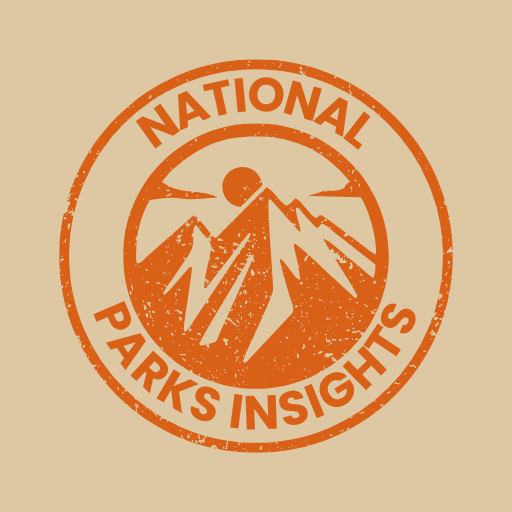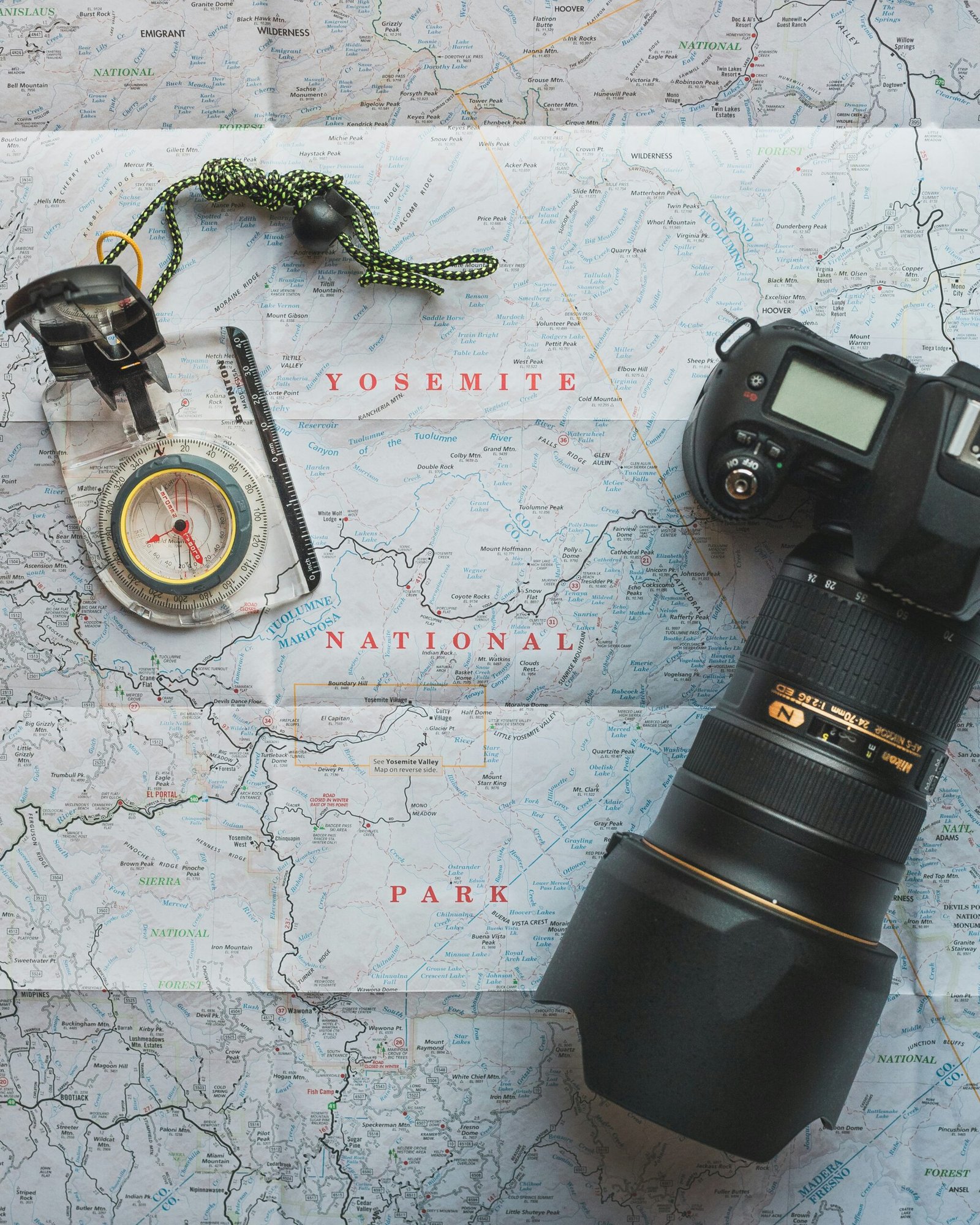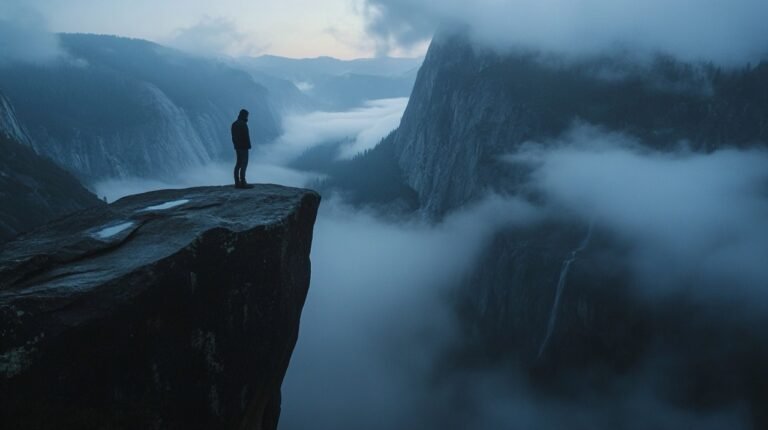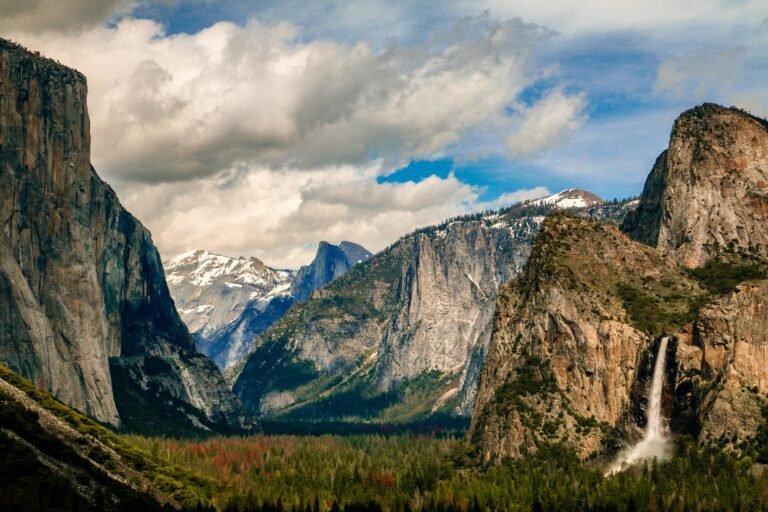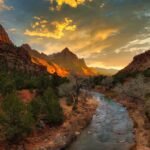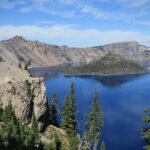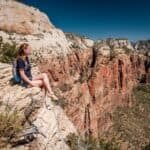Yosemite Camping Introduction
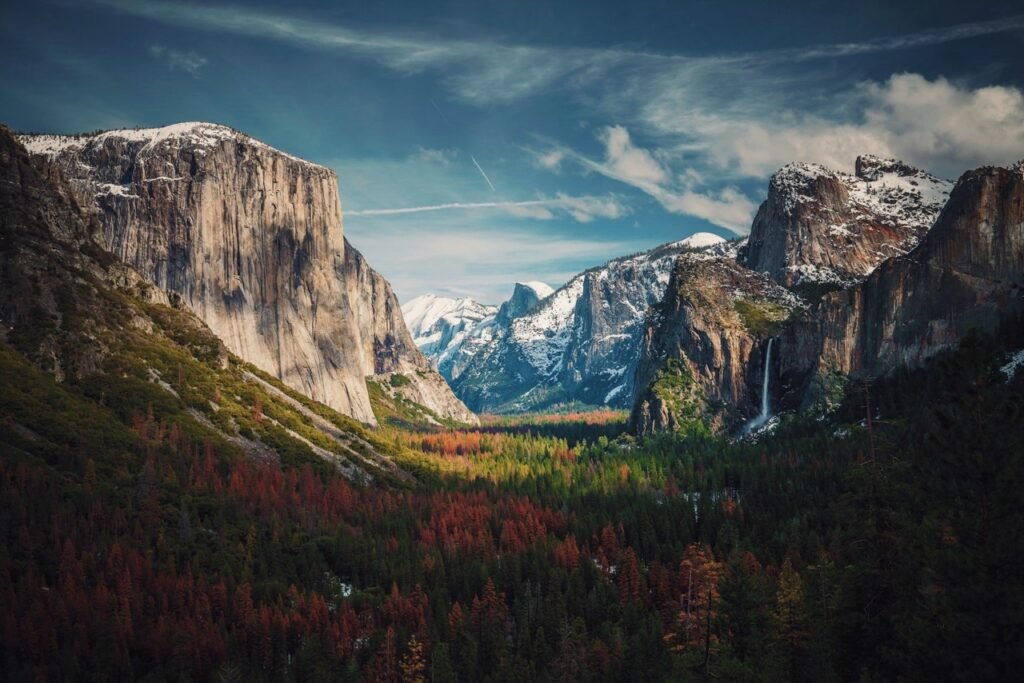
Camping Seasons and Availability
Camping in Yosemite National Park is your golden ticket to soak in nature’s masterpiece. Throughout the year, you can pitch a tent, but remember, the Great Outdoors has its mood swings. Most campsites roll out the welcome mat seasonally, thanks to winter’s frosty makeover.
Here’s how things generally shake out:
| Season | Campground Availability |
|---|---|
| Spring | Some spots open, others hit the snooze button |
| Summer | Full house – time to mingle with nature lovers |
| Fall | Still buzzing with activity |
| Winter | A handful of spots open – bundle up and enjoy the serenity |
Want the scoop on saving your spot? Mosey over to yosemite camping reservations for the nitty-gritty.
Camping Regulations and Guidelines
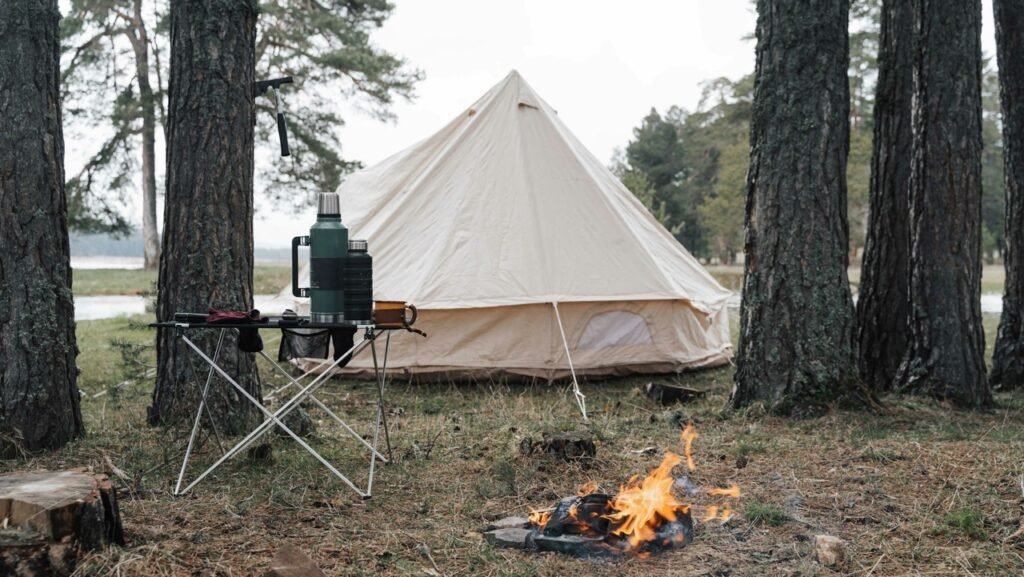
For a camping trip that won’t give the park rangers gray hairs, stick to these handy rules:
- Designated Campgrounds: Trust us, camping outside the lines isn’t a good idea. Keep it legal and cozy in the marked campgrounds. Going rogue isn’t allowed!
- Wilderness Permits: Heading into untamed territory for an overnighter? You need a wilderness permit tucked in your backpack. Must-haves for spots like Half Dome and Little Yosemite Valley Campground. Like your VIP pass to Mother Nature’s club!
- Distance Requirements: Keep your campsite at least four trail miles from busy spots like Tuolumne Meadows and Yosemite Valley. Plus, a good mile away from any road. Call it a quest for peace and quiet.
- Safety: Bears are cute, on T V. In real life, you wouldn’t want to tango with one. Store food and anything smelly in bear-proof containers to remain off their radar. Check out our bear safety tips for more.
Playing by these rules keeps the wilderness pristine and fun for everyone. Need more insider tips? Check out our guide on planning your Yosemite camping trip. Happy trails!
Wilderness Camping in Yosemite
Get ready to dive into the wild side with an unforgettable camping trip in Yosemite’s backcountry. Sleeping under the starry sky with nothing but the sound of the wind in the trees is as close as you can get to nature. Just make sure you play by the rules to keep this treasure trove safe for everyone.
Wilderness Permit? Gotta Have it!
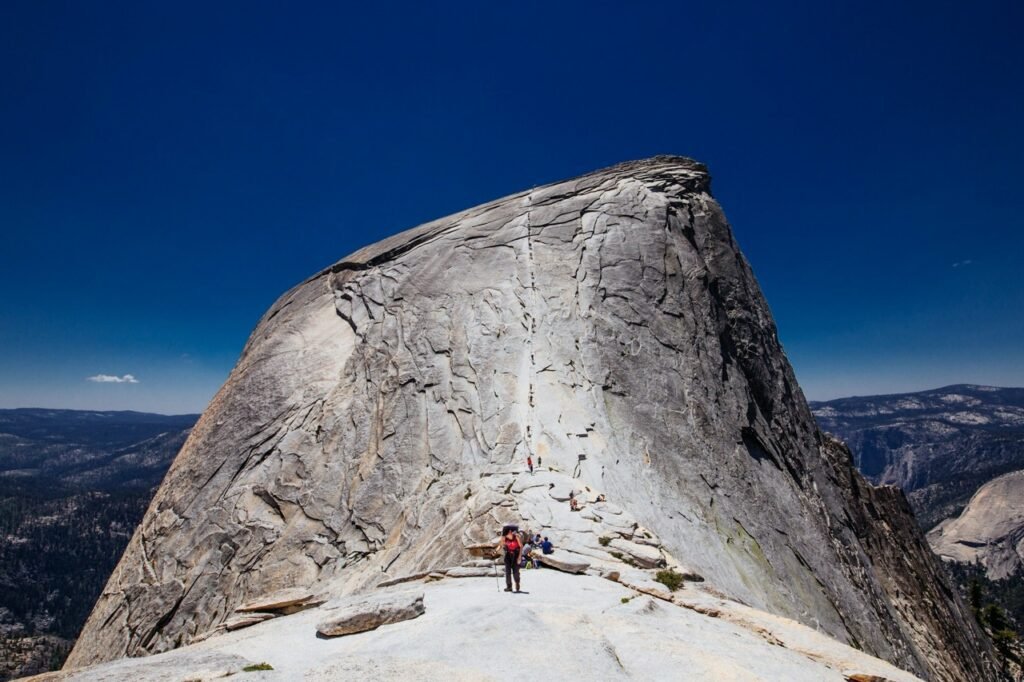
Going on a wilderness adventure in Yosemite isn’t just about packing your bags and hitting the trail. You need a permit for any overnight stays in the wild. Your permit is your ticket to the great outdoors, and it helps keep the magic of Yosemite alive and well, in line with the Wilderness Act (National Park Service).
Permit Need-to-Knows:
- Permits are your passport for all overnight stays—think backpacking and staying the night after climbing.
- You can still hike during the day without a permit, except when aiming for Half Dome. No overnight permit needed in frontcountry campgrounds.
- Snagging a permit for hot spots like the trail to Little Yosemite Valley takes some planning due to the popularity (National Park Service).
Reserve Your Spot:
- From late April to October, it’s all about reservations.
- Plan early! Sixty percent of trailhead permits are up for grabs 24 weeks out.
- Didn’t plan ahead? Forty percent become available a week before your adventure starts (National Park Service).
Table – Permit Sharing:
| Trailhead | Plan Ahead | Last-Minute Chance |
|---|---|---|
| Little Yosemite Valley | 60% | 40% |
| Popular Trails | 60% | 40% |
Where to Pitch Your Tent
When you’re setting up camp in Yosemite, certain spots are the place to be. Some areas have designated campgrounds with a few creature comforts and rules to follow. Stick to ’em to help keep the park looking as awesome as it does.
Campground Hangouts:
- Little Yosemite Valley Campground: This is the only spot to pitch your tent in the Little Yosemite Valley.
- Backpackers Campgrounds: Near Glen Aulin, May Lake, Sunrise, Merced Lake, and Vogelsang High Sierra Camps, these spots offer a place to settle down with a touch of extra amenities.
Regulations:
- No going off the beaten path between Yosemite Valley and Little Yosemite Valley.
- You’re free to roam and camp past the Half Dome/John Muir Trail junction or further along towards Merced Lake.
- Some zones are a no-go, like the top of Half Dome and Lost Lake.
- Stay as least four trail miles away from bustling spots like Tuolumne Meadows, Yosemite Valley, Glacier Point, Hetch Hetchy, and Wawona, and a mile away from any roads (NPS – Wilderness Regulations).
Want the deets on campsite locations? Check out the Yosemite map. It’s wise to plan ahead, especially when everyone’s flocking to the park. Pack what you need, follow the rules, and get ready for a backcountry adventure you’ll never forget.
For more info on permits and where to trek, hop over to our Yosemite hiking trails page.
Planning Your Yosemite Camping Trip
So, you’re gearing up for the wild beauty of Yosemite—smart choice! A little groundwork can make all the difference for a camping trip to remember. Let’s chat about what you need in your back pocket: entrance fees, reservations, and some handy camping hints.
Entrance Fees and Reservations
Getting into Yosemite isn’t free, no sirree. But hey, those fees keep the park looking fabulous and running smoothly, so it’s a win-win.
| How You Roll Into Yosemite | What It Costs You |
|---|---|
| On four wheels | $30 a car |
| On two feet | $15 a person |
Want more deets on fees? Head over to Yosemite entrance fees.
Pro tip: Reservations are your best friend here, especially when Yosemite’s bursting at the seams with visitors. Aim to book your spot as early as possible—months in advance isn’t uncommon. Get started with Yosemite camping reservations.
Camping Tips and Recommendations
Want the skinny on having a blast without a hitch in Yosemite? Here’s the lowdown.
Follow the Rules
- Stick to camping in the designated spots. Venturing into non-camping areas is a no-no (NPS approved).
- Going off-grid for some wilderness action? A Wilderness Permit is a must. Snap one up to 24 weeks ahead for most slots; a few are held until the last moment (NPS has your back).
Gear Up Right
- Grab a trusty Yosemite map for your adventures.
- Pack up enough grub and drinks. Keep those munchies secure with wildlife-safe storage.
- Dress for the unpredictable Yosemite weather, ’cause it’s ready to throw a curveball anytime.
Staying Safe
- While it may seem unrelated, use a heat protectant for hair straightening—you wouldn’t want those locks singed in the heat.
- Water looks inviting? Remember your water safety basics—those natural swimming spots can have hidden surprises.
- Before you roll your wheels, check the road conditions to avoid unexpected detours.
For a deep dive into keeping your trip on track and maybe some hair tips, check out the quirky angle on tips for straightening curly hair. Who knew hair care was part of outdoor life?
So, gear up, follow the good advice, and get lost (in the best way!) in the jaw-dropping vistas of Yosemite. Whether you’re hiking the trails or soaking up the views, your trip will be one for the books.
Enjoying Yosemite’s Scenic Wonders
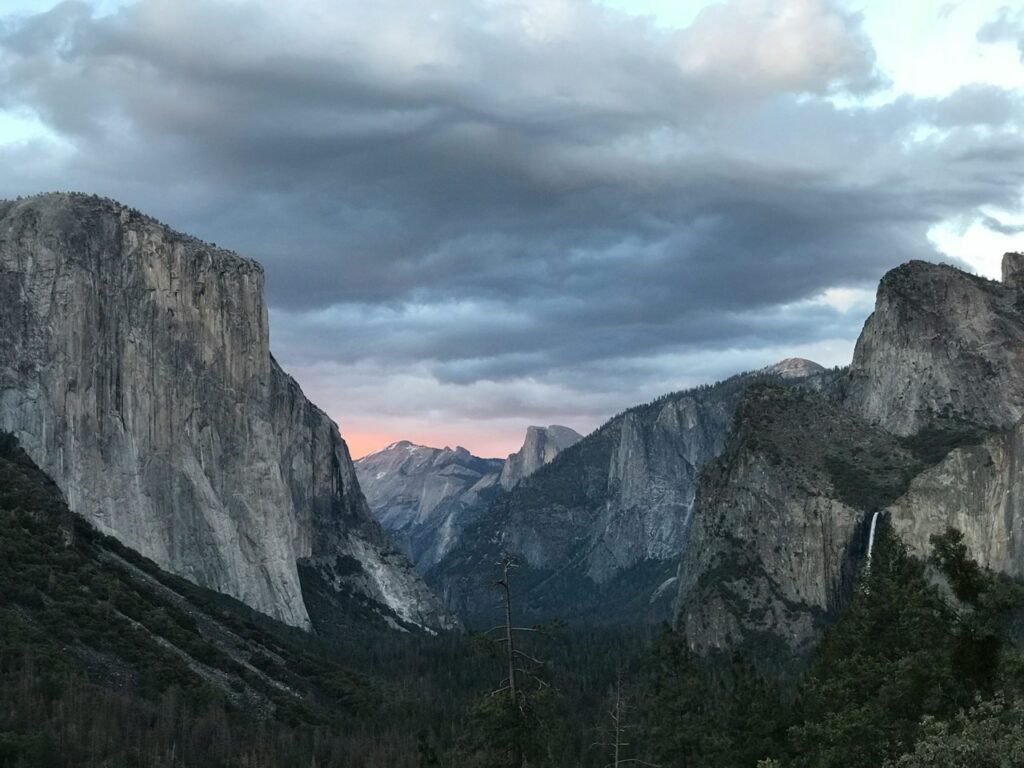
Yosemite National Park isn’t just another pretty place—it’s Mother Nature’s masterpiece, jam-packed with jaw-dropping views and heart-pounding adventures. Read on for some can’t-miss spots and insider tips on how to become one with the wild side of Yosemite.
Unmissable Spots and Adventures
- Yosemite Valley
- With its jaw-dropping granite cliffs, peaceful meadows, and dramatic waterfalls, Yosemite Valley is a scene straight out of a postcard.
- El Capitan
- Rock climbers’ paradise, this impressive granite giant offers mind-blowing sights. Perfect for the daredevil in you.
- Check out Yosemite El Capitan for more.
- Half Dome
- A geological wonder that ticks off the bucket list for many outdoor lovers. The Half Dome hike is a must-try for thrill-seekers.
- Yosemite Falls
- Among the continent’s sky-high waterfalls, their roaring beauty peaks in spring.
- Experience the cascade: Yosemite falls, boasting Upper Yosemite, Middle Cascades, and Lower Yosemite Falls.
- Glacier Point
- Incredible panoramic views at Glacier Point let you soak in Yosemite Valley and Half Dome in one sweeping gaze.
- Mariposa Grove
- Wander amidst the towering giants like the famed Grizzly Giant, some of the oldest sequoias around.
- Start your stroll at Mariposa Grove.
| Place | Fun Stuff to Do |
|---|---|
| Yosemite Valley | Hiking, Snap some pics |
| El Capitan | Rock Climbing, More Hiking |
| Half Dome | Trekking, Photography snaps |
| Yosemite Falls | Sightseeing, Snapping pics |
| Glacier Point | Trekking, Enjoying the view |
| Mariposa Grove | Walking, Immersing in Nature |
Wildlife Watching: How to Do It Right
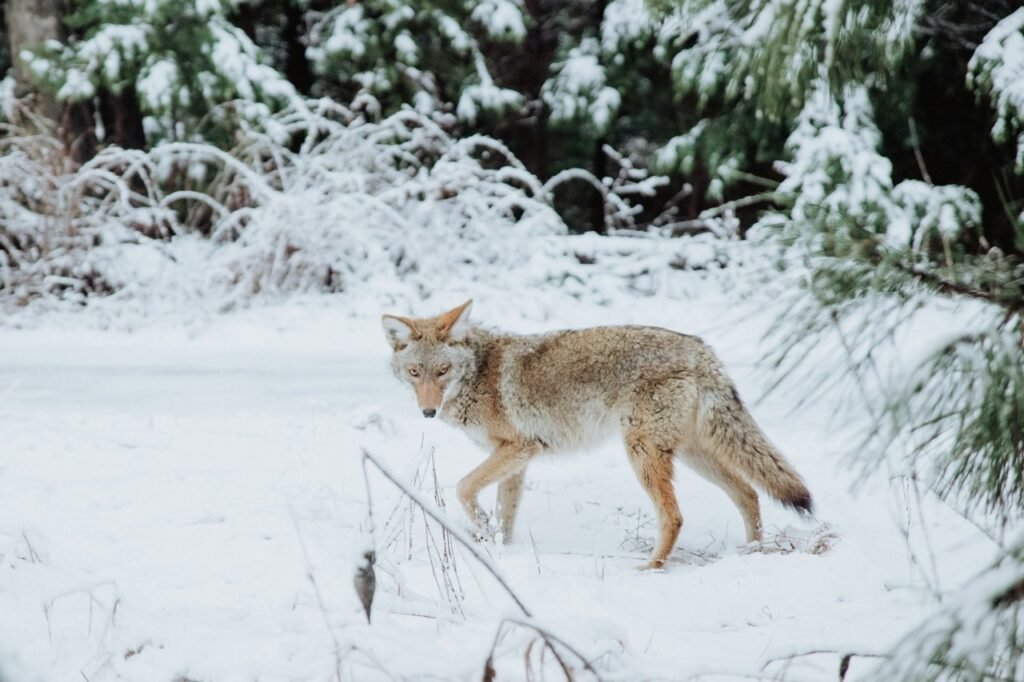
Yosemite is crawling with all sorts of plants and animals. Keeping your distance means fun for you and safety for them—plus, it makes you feel like an explorer!
- Mind Your Manners Around Animals
- Keep away and don’t feed ’em. Seriously. It’s not just about safety, it’s about respect.
- Follow proper food storage practices to dodge those unexpected bear party crashers. (Check the National Park Service for tips)
- Binoculars Are Your Best Friend
- Want to spy on deer, foxes, and birds without getting too close? A good pair of binoculars lets you see it all with zero hassle.
- Prime Animal-Spotting Hours
- Animals like their morning and evening routines, so dawn and dusk are great times to catch them in action. Mind your step and keep the surprise meetings to a minimum.
- Springtime is when you’ll see them bouncing back from winter. Perfect for snapping those National Geographic-worthy shots! (North Texas Jellystone Park)
For a deeper look into how to observe with respect, peep nature observation and wildlife awareness.
Embark on a journey through Yosemite’s epic sights while keeping a keen eye on its furry and feathered residents. Respect Mother Nature, stick to the park rules, and do your bit to keep Yosemite as heavenly as you found it.
Safety Measures in Yosemite
Your time spent camping in Yosemite is meant to be unforgettable for all the right reasons. So, let’s make sure you stay safe during your adventures with these handy tips about playing in the water and biking around the park.
Water Safety and Swimming
With rivers, lakes, and waterfalls aplenty, Yosemite’s natural beauty is just begging to be explored. But before you leap into those inviting waters, make sure you’re clued up on how to keep yourself safe.
- Stick to the Safe Zones: Only take a dip where it’s officially allowed.
- Watch the Currents: Even if the water seems tranquil, a sneaky undercurrent might be lurking.
- Skip the Booze: Keep your wits about you—leave the alcohol for later.
- Keep an Eye on the Little Ones: Don’t let kids out of your sight, and keep them close enough to grab in a flash.
- Rafting with Care: Strap on a life jacket and check you’re within park guidelines.
| Water Fun | Safety Tip |
|---|---|
| Splashing Around | Stay in safe areas, beware of sneaky currents |
| Rafting | Buckle up with life jackets |
| Fishing | Keep back from raging waters |
Want to stay ahead of the game? Keep tabs on the latest Yosemite weather updates.
Biking Regulations in the Park
Pedaling through Yosemite is a blast, offering a great way to soak up those epic views. Just keep these rules in mind to keep yourself—and the park—safe and sound.
- Stay on the Path: Keep that bike on the paved and marked trails.
- Ignore the Wilderness Temptation: Sorry, but the wild areas are a no-go for bikes.
- Walk When Needed: Some spots require you to hop off and walk it out.
- Pedestrians First: Always give a friendly nod and way to walkers.
- Be a Night Owl with Lights: If you’re riding after dark, make sure you’re shining bright with lights and reflectors.
| Rule of the Road | What’s Expected |
|---|---|
| Roads Only | Stick to where the wheels are meant to roll |
| Stay Outta the Wild | No biking through untamed areas |
| Shine On | Proper lights for after-dark cruising |
Need a little extra guidance on biking fun? Our tips on Yosemite hiking trails have got you covered.
Enjoy a safe and truly incredible time camping in Yosemite. Whether you’re cannonballing into a clear river or biking past a majestic vista, being in the know protects both you and the wild. For the complete lowdown on camping rules and more, check out Yosemite Park and visit Yosemite National Park.
Best Times to Camp at Yosemite
Ideal Seasons for Camping
Thinking about pitching your tent in Yosemite National Park? Timing can make or break your trip. While Yosemite’s beauty never takes a holiday, late spring and early fall are your sweet spots. The weather is great, flowers are doing their thing, and the crowds are thin, making your campfire chats a little more peaceful.
| Season | Average Temperature (°F) | Visitor Crowds | Key Highlights |
|---|---|---|---|
| Spring (April – June) | 45 – 70 | Moderate | Epic Waterfalls, Wildflowers |
| Summer (July – September) | 50 – 90 | High | All Trails Open |
| Fall (October – November) | 40 – 75 | Low to Moderate | Fall Foliage, Cool Weather |
| Winter (December – March) | 30 – 50 | Low | Snowy Vistas, Quiet Vibes |
Want to hit that sweet spot between having trails all to yourself and missing out on the buzz? Late spring nails it. The waterfalls, like those in Yosemite Valley, are popping with the snowmelt, and temperatures are just right for wandering and wondering.
Benefits of Winter and Spring Camping
Winter and spring camping in Yosemite have their own special charm. In winter, the park becomes a snow globe of magic and stillness. Picture this: you’re sipping a hot cocoa while gazing at Yosemite Glacier Point or Yosemite El Capitan minus the usual bustling crowd. It’s pure serenity.
Winter Camping Wins:
- Fewer folks around
- Scenic snow-capped everything
- Fun with snowshoes and winter sports
Spring, meanwhile, is like a nature festival. Wildflowers are up, wildlife is out and about, and the melting snow makes the waterfalls look like they doubled their size. Plus, it’s not as packed as summertime, which means you might just snag that primo campsite.
Spring Camping Perks:
- Nature’s colors on full blast
- Critters galore
- Weather just right for hikes
Need to dig deeper into where to pitch a tent? Peep our pages on Yosemite National Park Waterfalls or Yosemite Valley Lodging. And if you’re all about planning ahead, check out Yosemite Camping Reservations to lock down your spot.
Pick the right time to camp, and you’re in for a Yosemite experience that’ll stick with you. Whether it’s the winter hush or spring’s vibrant kickoff, every season’s got a little something to make your heart skip a beat. Enjoy the ride!
Bear Safety in Yosemite
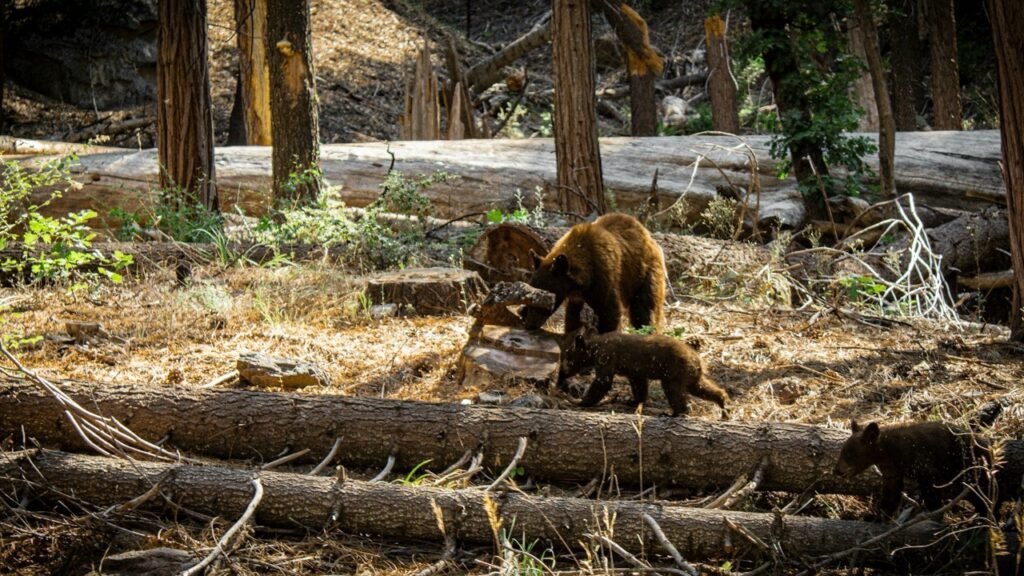
Hanging out in the wild beauty of Yosemite National Park means keeping yourself and the critters around you safe. Bears are part of the Yosemite gang, and they need their space—especially the black bears. Here’s the scoop on two biggies: bear spray rules and stashing your snacks right.
Bear Spray Regulations
First off, don’t even think about popping a can of bear spray. The folks at Yosemite say bear spray is a no-no; they see it as a weapon, meaning it’s off limits under park rules (WheresJanice). Plus, most of the time, black bears aren’t looking to party with humans. If you run into one, chances are they’ll skedaddle before you need to reach for spray. Bear spray should be the very last move, and using it wrong could make things worse, drawing bears in instead of shooing them away (WheresJanice).
Proper Food Storage Practices
The trick to dodging bear visits? Store your grub right. Bear run-ins often happen because of sloppy food storage. Here’s how to keep your snacks safe and sound:
- Use Bear Boxes: Campsites have these robust boxes for everything smelly—food, soap, cookware, you name it. These are bear magnets, so lock them up tight (WheresJanice).
- Dispose of Trash Properly: The park’s trash bins are bear-proof for a reason. Always use these bad boys to toss your waste and avoid luring bears into human spots (WheresJanice).
- Never Leave Food Unattended: Whether you’re kicking back at the campsite or blazing a trail, don’t leave food lying around. Pack it away to keep it out of bear paws.
- Store Food in Your Car: Can’t find a bear box? Pack food and scented stuff in air-tight containers in your trunk. Make sure you check Yosemite National Park’s guidelines to stay in the know about the latest rules.
| Food Storage Steps | What You Gotta Do |
|---|---|
| Use Bear Boxes | Lock up food and smelly items to keep bears away. |
| Use Bear-Proof Trash Bins | Trash goes in bear-proof bins, no exceptions. |
| Never Leave Food Unattended | Secure your snacks. No freebies for bears. |
| Store in Car (if necessary) | Air-tight containers are a must if using your trunk. |
By sticking to these bear safety tips and food storage rules, you’ll make sure your Yosemite adventure is epic and incident-free. Plus, you’re doing your part to keep Yosemite’s amazing wildlife safe. For more hacks and hints on camping out here, swing by our camping tips and recommendations section.
Popular Camping Sites in National Parks
Ready to get your camping game on? We’ve rounded up some top-notch spots within national parks that you won’t want to miss. Claim your slice of paradise and enjoy stellar views that’ll make you feel one with nature.
Highlights of Top National Park Campgrounds
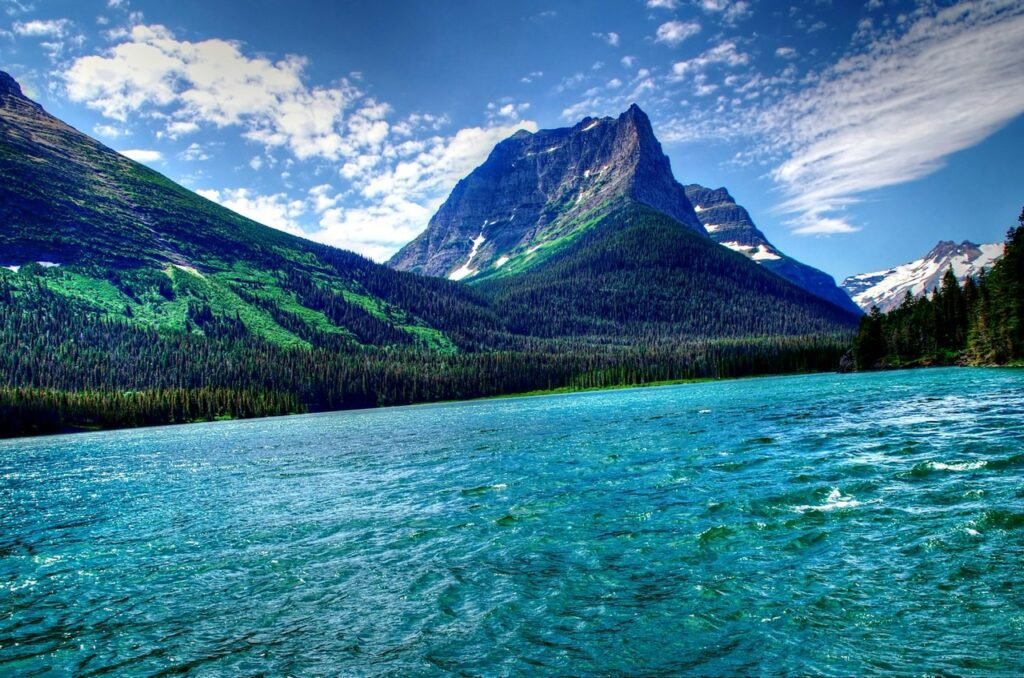
Glacier National Park
- Many Glacier Campground: Nestled at the end of Many Glacier Road, 110 cozy campsites await you under Grinnell Point’s watchful eye. The front loop is first-come, first-served, making it perfect if you’re a spontaneous adventurer, but if you prefer to plan ahead, the back loop’s your bet—reservations needed. RVs up to 35 ft? Yep, they fit right in. And there are trails leading to lakes and mountain passes galore. (Moon)
- Sprague Creek Campground: With just 25 quaint spots hugging Lake McDonald’s shoreline, these sites fill up faster than a bonfire on a chilly night. Best to get there before the sun’s fully up in midsummer. But, leave the big RVs home—towed units are a no-go here. (Moon)
Yellowstone National Park
- Slough Creek Campground: A cozy option with 16 spots for tents and small RVs. It’s like finding a gem, booking opens six months out, and it’s snapped up quicker than hot pancakes from a griddle. You’re looking at $20 a night here. (Outside Online)
Grand Teton National Park
- Signal Mountain Campground: Offers 81 scenic sites for either a tent or an RV. Reservations open half a year ahead and fill up fast, so don’t sleep on it—well, till you get there. Tent camping costs $54 per night, and you can get cozy from Memorial Day through Columbus Day. (Outside Online)
Capitol Reef National Park
- Fruita Campground: This site is surrounded by grass and boasts fruit trees planted way back in the 1880s. With 65 sites on offer, it’s like pitching a tent in a piece of history. Make your reservation half a year in advance, and it’s yours for $25 a night. (Outside Online)
Reservation Information for Prime Campsites
Plan smart by marking your calendar and booking early—before your dream camping spot is just that, a dream. Here’s the scoop:
| National Park | Campground | Reservation Window | Fee per Night |
|---|---|---|---|
| Glacier National Park | Many Glacier | 6 months before | Varies |
| Glacier National Park | Sprague Creek | First-come, first-served | Varies |
| Yellowstone National Park | Slough Creek | 6 months before | $20 |
| Grand Teton National Park | Signal Mountain | 6 months before | $54 |
| Capitol Reef National Park | Fruita | 6 months before | $25 |
Hop onto the relevant national park site to lock down your spot. For those yearning to hit Yosemite, check out our Yosemite camping reservations page. And, if other camping options pique your interest, peruse our camping near Yosemite National Park section.
A little planning can go a long way to snagging the perfect camping trip. Tie together nature vibes and unforgettable memories in these beautiful parks. For an extra dose of info, look up our visiting Yosemite National Park guide.
